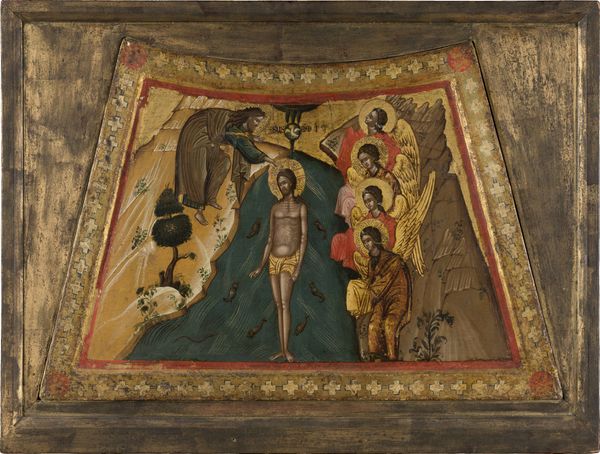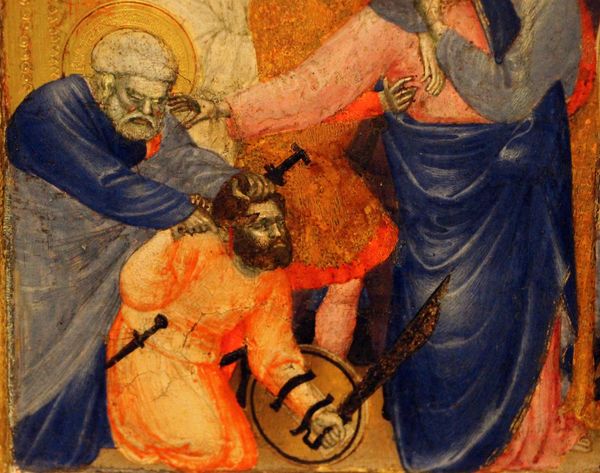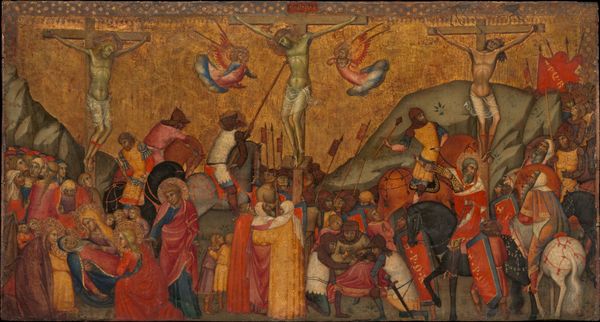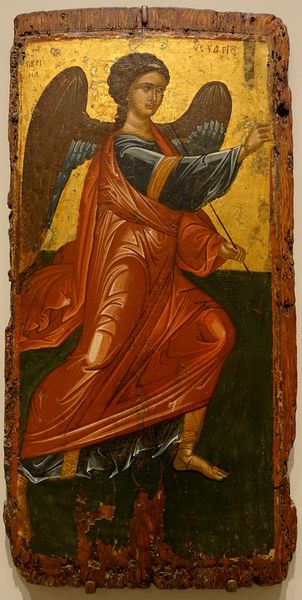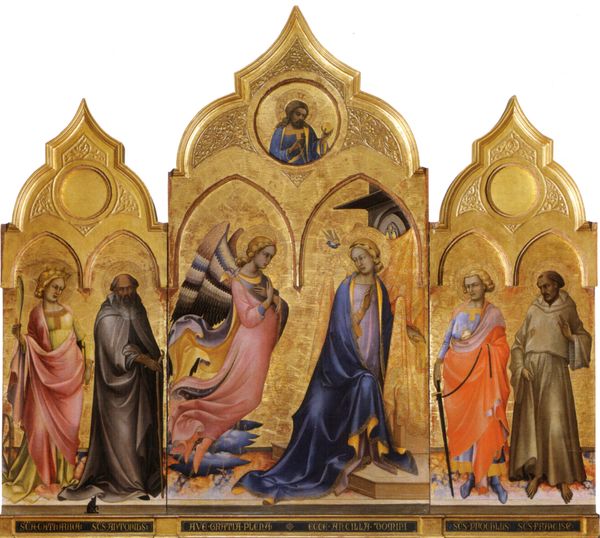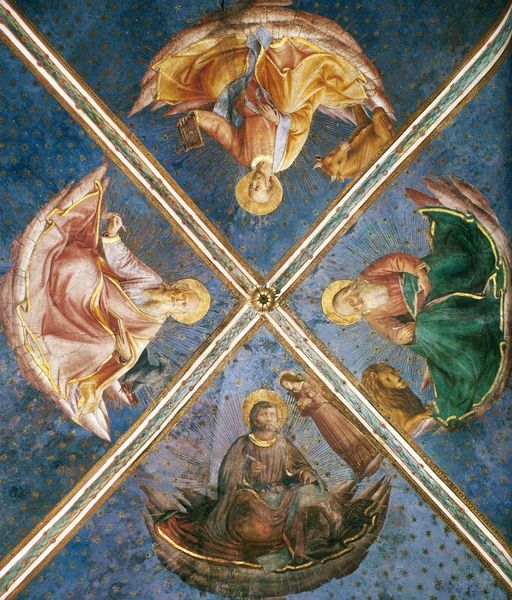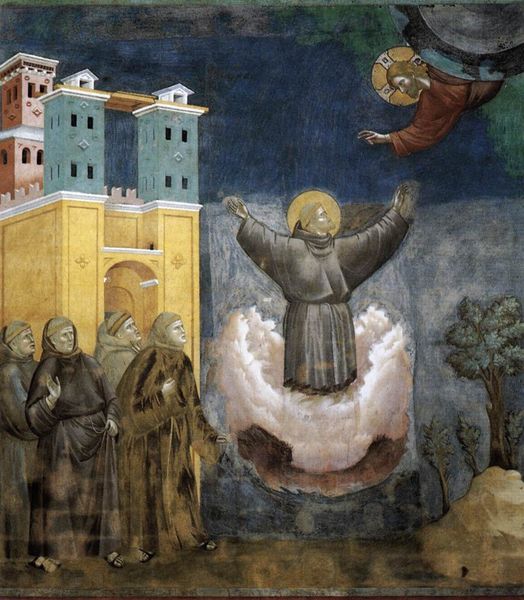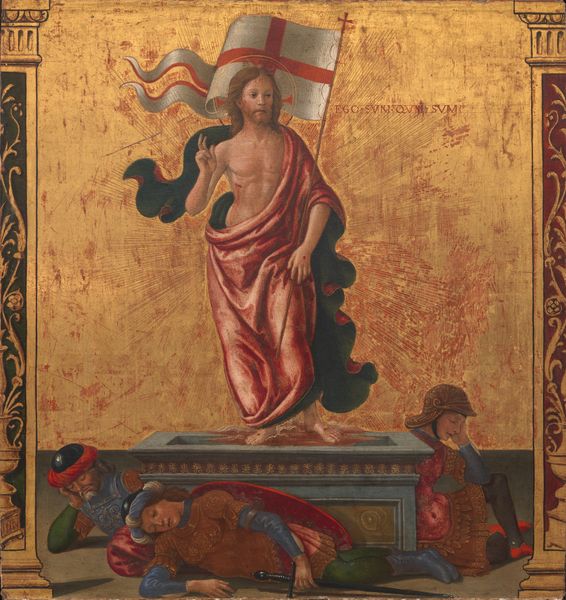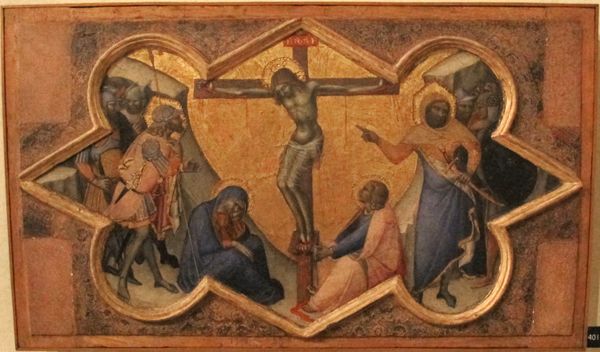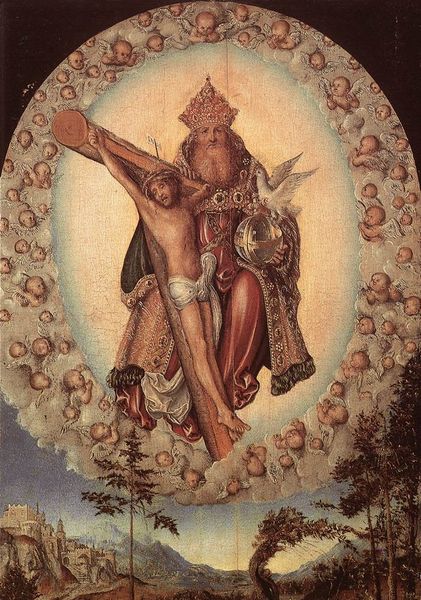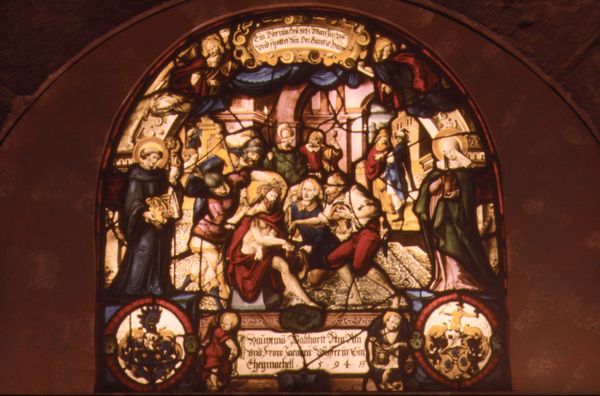
painting, oil-paint
#
african-art
#
contemporary
#
allegory
#
painting
#
oil-paint
#
painted
#
figuration
#
11_renaissance
#
oil painting
#
acrylic on canvas
#
history-painting
#
nude
#
erotic-art
Copyright: Harmonia Rosales,Fair Use
Editor: This is "The Annunciation of a Woman" by Harmonia Rosales, created in 2018 using oil paint. It presents a compelling reimagining of a classic scene. What immediately strikes me is the rich symbolism combined with what seems like a contemporary lens on the religious narrative. How do you interpret this work? Curator: From a materialist perspective, I'm drawn to Rosales's choice to use oil paint, a medium steeped in the Western art tradition, to challenge that very tradition. She is appropriating the means of production – oil on canvas, perspective, composition – to subvert and decolonize a visual language. Think about the labor involved, the hours spent mastering a technique historically used to uphold specific power structures, and now turned on its head. What does that appropriation of artistic labor signify to you? Editor: It makes me think about reclaiming a narrative, rewriting a history from a different perspective by adopting and adapting its visual language. The figures themselves, being Black, shift the power dynamic considerably. Curator: Precisely. The shift to Black figures disrupts the established iconography, inviting us to examine the cultural and social contexts that have historically shaped the Annunciation narrative. Consider the layers of meaning: the traditional symbolism, the act of painting itself as labor and resistance, and the cultural implications of representing traditionally white figures as Black. Editor: So, it’s not just about changing the figures; it’s about interrogating the entire system of art production and its historical biases. I see that the Ankh is also presented, can you talk more about that? Curator: This shifts away from a Eurocentric reading towards pre-Christian African artistic motifs and traditions. By centering African spiritual symbols Rosales is using the means of visual representation to speak to material reality through time. How does that connection make you feel? Editor: I see how the piece uses the familiar to make the viewer rethink traditional art's place and context. It is truly an original method that invites thinking. Curator: Absolutely. By considering process, material, and historical context, we reveal Rosales's complex and multifaceted commentary. I have found my appreciation enhanced.
Comments
No comments
Be the first to comment and join the conversation on the ultimate creative platform.
